owls in arkansas
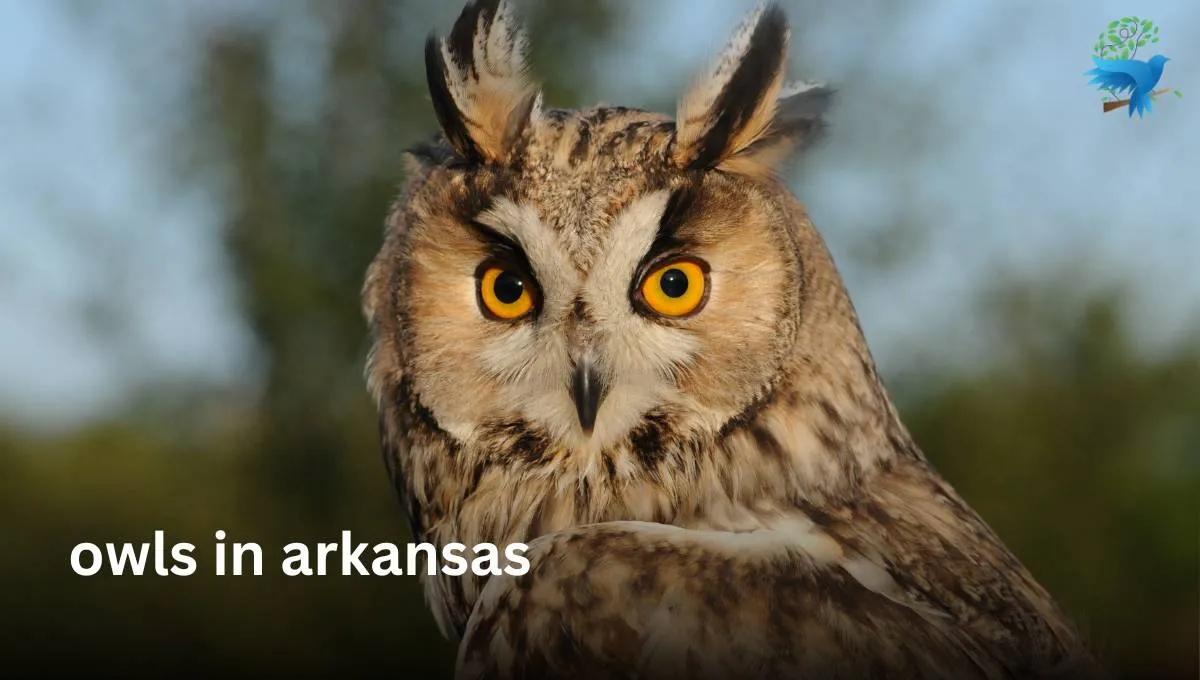
Arkansas, also known as the “Natural State”, is home to a diverse range of habitats, from beautiful hot springs, rivers, and lakes to forests, swamps, prairies, suburbs, and urban areas.
This makes it an ideal location for a variety of bird species, especially, owls. There are several species of owl found in Arkansas.
Some of these species are permanent residents, while others can be spotted only seasonally.
So, if you are an avid birdwatcher and curious to know what owls can be found in Arkansas, then you are in the right place.
In this article, where we talk all about five species of owl that are found in this state. Along with their eating habits, appearances, and other more.
List of owls in Arkansas:
- Short-earned owl
- Northern saw-whet owl
- Burrowing owl
- Eastern screech-owl
- American barn owl
1. Short-earned owl (Asio flammeus)
Short-earned owl is one of the world’s most widely distributed owls. It belongs to the family Strigidae.
Likewise, owls belonging to the genus Asio are known as the earned owls, as they have tufts of feathers resembling mammalian ears.
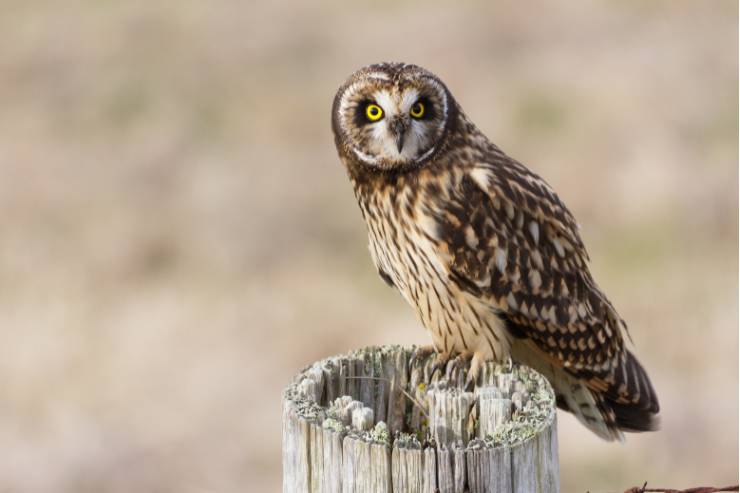
These ear stuffs may or may not be visible. Whereas, the short-eared owl will show its tufts when in a defensive pose, but its very short tufts are usually not visible.
This species is a medium-sized owl and has large eyes, a big head, a short neck, and broad wings. The short-earned owl bill is short, strong, hooked, and black.
Also, its plumage is mottled tawny to brown with a barred tail and wings. The upper breast is notably streaked.
Size and wingspan of Short-earned owl:
- Size: 34-43 cm (13–17 inches)
- Weight: 206-475g (7.3-16.8 oz)
- Wingspan: 85-110cm (33–43 inches)
- Life span: 12 years
Habitat: The short-earned owl can be seen in Arkansas during the winter when they are not breeding. They mostly arrive in October and leave at the end of March or early February.
Also, they occur on all continents except Antarctica and Australia. It inhabits open country such as tundra, grassland, savannahs, dunes, heathlands, and agricultural areas.
Feeding: The short-earned owls are skilled hunters, especially in grassland habitats. It mainly feeds on small mammals like mice, voles, and shrews, which are abundant in these areas. Also, they will predate smaller birds and insects.
2. Northern saw-whet owl (Aegolius acadicus)
The northern saw-whet owl, scientifically known as Aegolius acadicus, is a species of small owl native to North America.
It is similar in size to the American robin. This species has a round, light, white face with brown and cream streaks. Also, they have dark beaks and yellow eyes.
Like some other owls, these birds also have excellent hearing and exceptional vision in low light. They are migratory birds without any strict pattern.
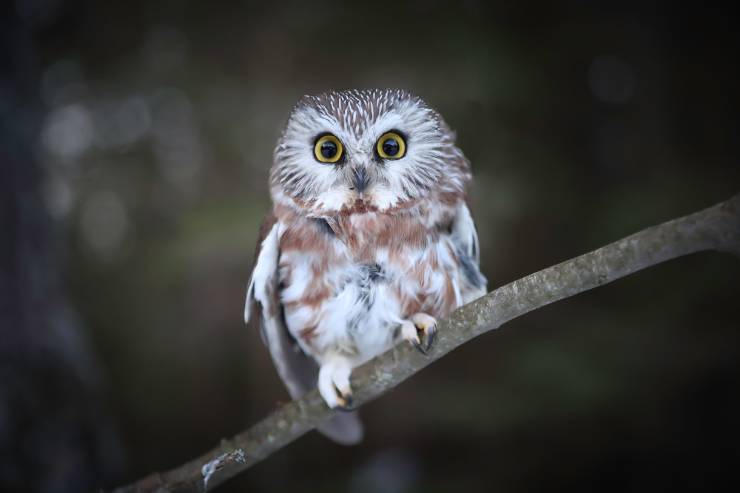
Size and wingspan of Northern saw-whet owl:
- Size: 17-22 cm (6.7-8.7 inches)
- Weight: 54-151 g(1.9-5.3 oz)
- Wingspan: 42-56.3 cm (16.5-22.2 inches)
- Lifespan: 7 to 17 years
Habitat: It is a diminutive, forest-dwelling owl species residing in the woodlands of Arkansas. Despite their small size, the northern saw-whet owl has a wide distribution across North America.
They inhabit coniferous forests, sometimes mixed or deciduous woods, and also love riparian areas because of the abundance of prey there.
Feeding: The northern saw-whet owls are carnivores. They mostly eat small mammals and also supplement their diet with small birds, with passerines such as sparrows, swallows, chickadees, and kinglets.
Moreover, on the Pacific coast, these birds also eat crustaceans, frogs, and aquatic insects.
3. Burrowing owl (Athene cunicularia)
The burrowing owl, commonly known as the shoco, is a small, long-legged owl. It is endangered in Canada and threatened in Mexico.
It has bright eyes and its beaks can be dark yellow or gray depending on the subspecies. This bird has prominent white eyebrows and a white”chin” patch, which they expand and display during certain behaviors, such as a bobbing of the head when agitated.

Likewise, adults have brown heads and wings with white spotting. The abdomen and chest are white with variable brown spotting or barring, also based on the subspecies.
Size and weight of Burrowing owl:
- Size: 19-28 cm (7-11 inches)
- Weight: 140-240 g (5-8 oz)
- Wingspan: 50.8-61 cm (20–24 inches)
- Life span: 6 to 8 years
Habitat: It is a unique species that is rarely seen in Arkansas but has been spotted occasionally, primarily in the summer and spring months.
The burrowing owl is found throughout open landscapes of North and South America. Aside from this, it can be also found in grasslands, rangelands, agricultural areas, deserts, or any other open, dry areas with low vegetation.
Feeding: It mainly feeds on large insects and small rodents. They sometimes also eat amphibians, reptiles, and birds. Unlike other owls, these birds also eat some seeds and fruits.
They collect mammal waste that they put around their nests to attract dung beetles, one of their favorite foods.
4. Eastern screech-owl (Megascops asio)
The eastern screech-owl is a small but powerful bird that is about the size of a robin. It is relatively common in Eastern North America, from Mexico to Canada.
Eastern screech-owl distinctive appearance includes tufted ear feathers, large yellow eyes, and a mottled plumage that provides excellent camouflage against tree bark.
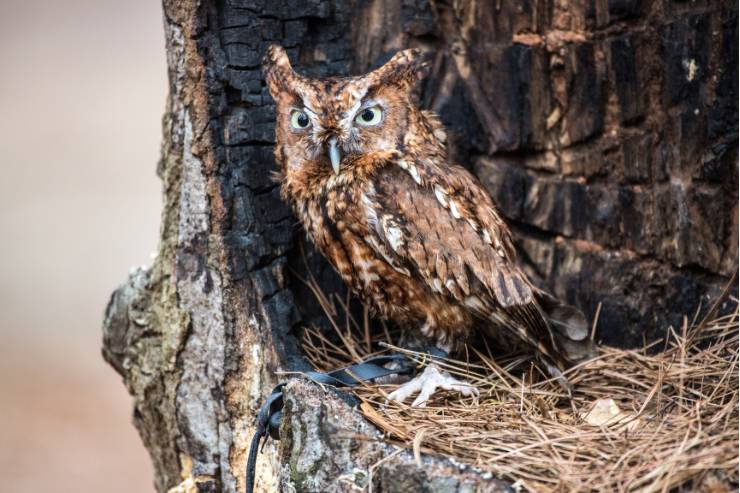
Size and wingspan of Eastern screech-owl:
- Size: 16-25 cm (6.5-10 inches)
- Weight: 121-244 g (4.25-88.5 oz)
- Wingspan: 46-61 cm (18–24 inches)
- Life span: 8 to 10 years
Habitat: This bird is one of the smallest owls in Arkansas, and is a permanent resident throughout the entire state.
It inhabits open mixed woodlands, deciduous forests, parklands, riparian woods along streams and wetlands, mature orchards, and woodlands near marshes, meadows, and fields.
These species try to avoid areas known to have regular activity of larger owls, especially great horned owls.
Feeding: The eastern screech-owls primary diet includes rodents, songbirds, and various insect types.
5. American barn owl (Tyto furcata)
The American barn owl, scientifically known as Tyto furcata, is a medium-sized, pale-colored owl with long wings and a short, squarish tail.
The shape of the tail helps distinguish it from typical owls when seen in the air. Also, the American barn owl is known for its distinctive heart-shaped face and stunning white feathers.
The heart-shaped face is usually bright white, but in some subspecies, it is brown. The average lifespan of the American barn owl in the wild is around 10 years.
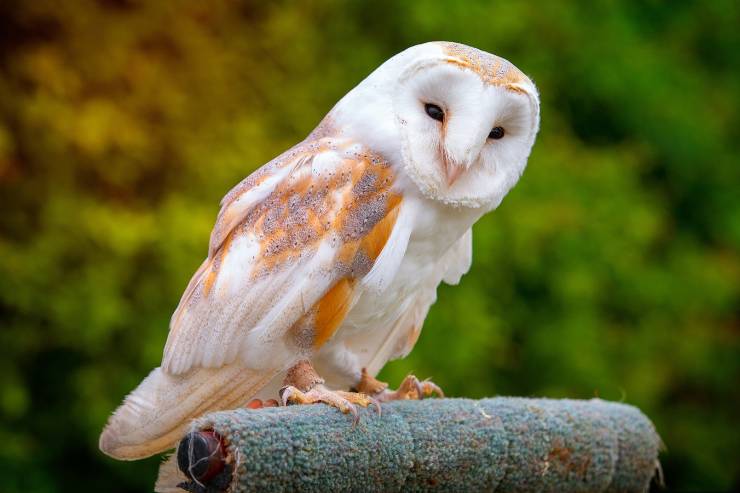
Size and wingspan of American barn owl:
- Size: 34-38 cm (13–15 inches)
- Weight: 400-600g (0.88-1.3 lbs)
- Wingspan: 29-36 cm (11–14 inches)
- Life span: 10 years
Habitat: This bird is native to North and South America and has been introduced to Hawaii. Also, they are found in Arkansas year-round.
They avoid heavily forested areas, so they are largely absent from the north-central and western portions of Arkansas, where forest dominates.
However, they are seen in southern, eastern, and northeastern Arkansas where pairs may establish territories near wetlands, grasslands, or river floodplains.
Feeding: The American barn owl primarily feeds on small mammals, especially mice, and voles, They are known to swallow their prey whole and later regurgitate the indigestible parts.
Conclusion
In conclusion, the diverse habitats of Arkansas provide a perfect home for a variety of owl species. From the small Eastern screech-owl to the medium-sized American barn owl, each species contributes to the rich biodiversity of the state.
Their presence enhances the natural beauty of Arkansas. Whether you’re a birdwatcher, a nature enthusiast, or just curious, the owls of Arkansas offer a fascinating glimpse into the world of other nocturnal birds of prey.






